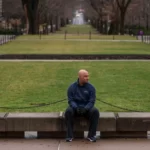Stephen Nohlgren of the St. Petersburg Times uses the $1,300 ER bill of a local man who sought treatment for a toothache to explain why emergency-room costs are so high.
Stephen learned of Kalyan Sircar’s story when he called the paper to complain about his ER bill. Sircar said he spent 10 minutes with a doctor. Stephen knew Sircar’s story would resonate with readers.
“I did not see this as a story taking anyone’s point of view, but was interested in why these expensive bills show up when they usually bear no relationship to what our insurance companies actually pay,” Stephen says.
After outlining the gap between what hospitals charge and what they actually receive from Medicare, Medicaid and private insurance, Stephen writes:
“The gap gets wider and wider until charges eventually bear no relationship to actual costs.
This disparity usually doesn’t matter, because so few people pay the full charge.
Occasionally, a Kalyan Sircar comes by. No one negotiated in advance for him.”
Tip One: Let readers decide for themselves.
“By writing it without a point of view, either or for or against him, or for or against the hospital or his dentist, it turned out to be something that lots of people wanted to talk about, in part because they could all read their own agendas into it and often those agendas were 180 degrees apart,” Stephen says.
He says he received letters from people saying his story showed why the United States needs a national single-payer health care system, and others who said it proved why “Obamacare” is doomed to fail.
Journalists have to avoid looking at situations in black and white, and focus on laying out the situation and letting readers decide what’s right or wrong, he says.
“Journalists often see themselves as crusaders and sometimes end up ignoring evidence that is contrary to their point of view, which I think the public intuitively understands and does not like,” he says.
Tip Two: When you have the time, take it.
Stephen says it took weeks to get permission forms signed to get the medical records and confirm that Sircar’s account matched hospital records. He also had to schedule interviews with company executives and spokespeople.
“We don’t often have the luxury to do that, because the news business is mainly about currency and speed,” he says. “But occasionally we do have time, and it is wise to take it.”











